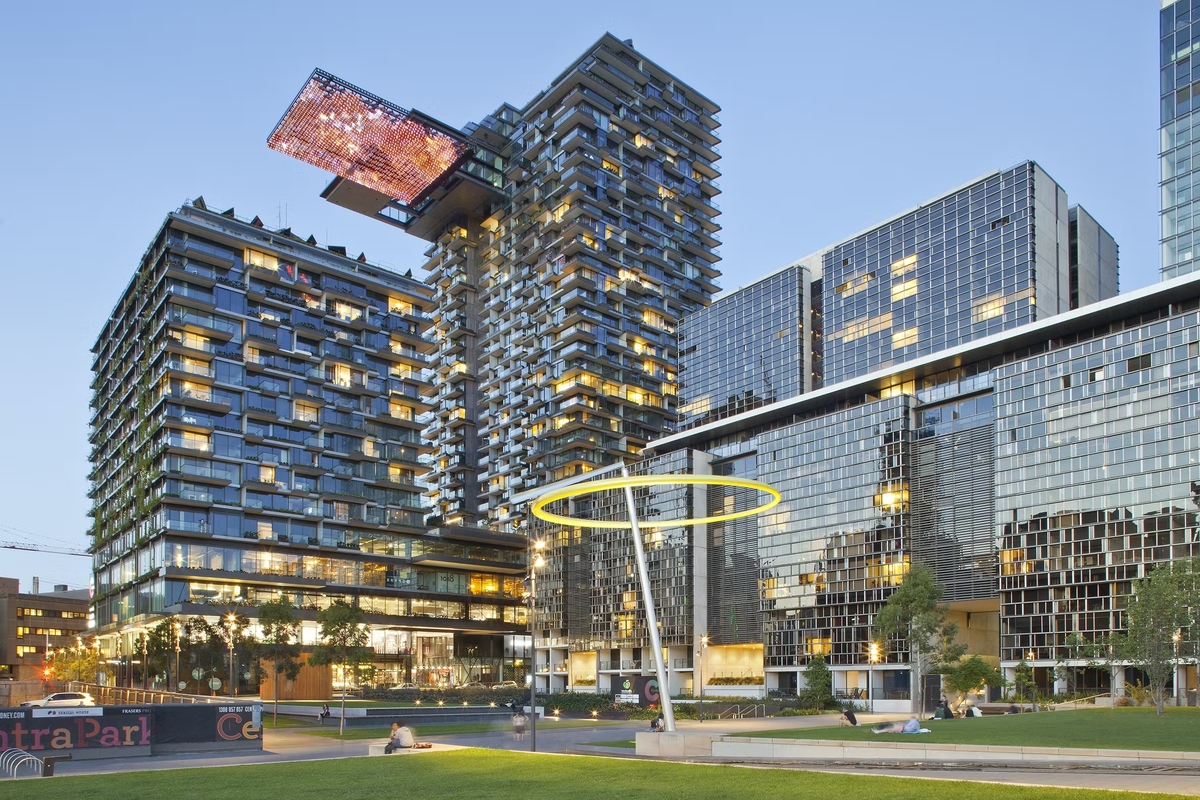Exclusive Neuroject Article: In the rapidly approaching landscape of 2024, the transformation of our living and working environments is on the horizon, driven by the integration of smart building technologies. As the Internet of Things (IoT) continues to advance, buildings are undergoing a profound evolution, becoming hubs of interconnected devices and sensors. According to industry reports, it is projected that by 2024, the global smart building market will reach unprecedented heights, with an estimated value exceeding $109 billion.
These smart buildings are poised to be outfitted with an array of sensors, collecting intricate data on key factors such as temperature, occupancy, and energy consumption. This data, when analyzed, promises to revolutionize user experience, offering unparalleled insights into building dynamics. Studies indicate that optimizing energy use through smart building solutions can lead to substantial reductions in consumption, with potential energy savings ranging from 15% to 30%. This not only translates to significant cost savings but also contributes to a substantial reduction in carbon emissions, aligning with global sustainability goals.
As we stride into 2024, the momentum of smart buildings extends beyond individual structures, fostering the emergence of smart cities. The interconnectivity of infrastructure within these cities is anticipated to facilitate efficient resource-sharing practices, contributing to sustainable urban development. Reports suggest that smart city initiatives, driven by the adoption of smart buildings, have the potential to reduce energy consumption by an additional 30%, further underscoring the transformative impact of these technologies.
In conclusion, the statistics and projections for 2024 indicate that the integration of smart building technologies is not merely a trend but a seismic shift in how we conceptualize and interact with our built environment. The combination of energy efficiency, safety enhancements, and the evolution towards smart cities signifies a future where buildings play a central role in shaping a sustainable and interconnected world.
Suggested article for reading: What is IoT in Construction? Definition, Applications and Steps (2023)
Table of Contents
Introduction to Smart Building Solutions
A “smart building” is a technical innovation that has evolved as the world gets more digitally improved. These structures have a high level of connectedness, allowing them to gather and analyze data in real-time. Building owners, occupants, and the environment may all profit from smart building solutions thanks to IoT and AI technology.
The goal of smart building solutions is to give building occupants an effective and comfortable environment. The lighting, heating, cooling, and security are controlled by several technologies that are integrated to allow people to personalize it as per their preferences. For instance, in contrast to conventional buildings that maintain a constant temperature, a smart building system may modify the room’s temperature based on the body heat of the occupants. Smart buildings are a solution that is in line with sustainability goals since such technologies open the way for energy efficiency, which will benefit the environment in response to a decreased carbon footprint.
Smart buildings are not only efficient but also secure. With the integration of advanced security systems, these buildings have a lower vulnerability to security breaches than conventional buildings. A smart building system can detect intruders and notify the appropriate personnel through an alert system, allowing for quick and efficient intervention. In addition, such advanced control systems provide better health conditions, reducing the spread of airborne illnesses and bacteria. This makes smart building solutions vital in sectors requiring high levels of hygiene, such as healthcare facilities and laboratories.
Building operators can gain from smart building solutions, which are created not only for the comfort and security of residents. It offers the capacity to track the building’s operations in real-time and alert users when repairs are necessary. Using this information, a proactive and responsive maintenance system is developed that lowers expenses while improving a building’s functionality. The controls of a smart building system can also be accessed remotely, allowing building operations staff to do so from a single place.
The introduction of smart building solutions has offered an innovative approach to the challenges of buildings and their impact on society and the environment. It has created the ability to operate buildings effectively while providing inhabitants with a comfortable and secure environment. Maintenance costs are significantly reduced while the lifespan of new buildings can be extended. Further, buildings that have implemented smart systems have proven to positively affect business operations and employee satisfaction. As such, the adoption of smart building solutions is essential for improving the living and working environment of future societies.
Suggested article for reading: Artificial Intelligence or AI in Construction

The Genesis and Evolution of Smart Buildings
Advanced technologies are incorporated into smart buildings to maximize occupant comfort, operate more efficiently, and have less negative environmental impact. Building automation systems (BAS), which were first created in the 1970s, are the precursors to today’s smart buildings. BAS systems were initially designed to manage the HVAC (heating, ventilation, and air conditioning) in commercial buildings. But over time, these systems have changed to improve the overall usefulness and efficiency of buildings.
The concept of intelligent buildings emerged in the 1980s and involved integrating various systems to support occupants’ activities and optimize building operations. These systems included communication, security, lighting, and climate control, all interconnected through a building management system (BMS) that allowed remote monitoring and control.
Internet technology entered the scene in the 1990s, which led to a new wave of improvements in smart buildings. Building automation systems were combined with internet-connected devices, allowing for remote building operation monitoring and management. Through integration, operational expenses were decreased and efficiency increased. By integrating and automating devices and sensors, the subsequent growth of wireless technologies and the internet of things (IoT) significantly altered smart building solutions.
The Multifaceted Benefits of Smart Buildings
As technology continues its rapid advancement, the concept of smart buildings evolves alongside it. These intelligent structures leverage a range of technological advancements to enhance their efficiency and functionality. While the advantages of smart buildings are plentiful, their multifaceted nature often goes unnoticed. In this essay, we will delve into the various aspects of smart buildings and elucidate why they offer such remarkable benefits to both occupants and building owners.
One key advantage of smart buildings lies in their capacity to curtail energy consumption. Incorporated technologies are specifically designed to optimize energy efficiency, leaving a smaller ecological footprint. For instance, intelligent lighting and heating systems can be programmed to adapt based on occupancy levels or external weather conditions, effectively reducing energy waste and yielding cost savings. This feature proves particularly valuable to building owners seeking to minimize energy consumption and economize on utility expenses.
Another significant benefit of smart buildings is the heightened comfort and well-being experienced by their occupants. Equipped with sensors, these buildings diligently monitor indoor air quality and adjust ventilation levels as necessary. This fosters healthier indoor environments that bolster productivity, diminish absenteeism, and promote overall well-being. Moreover, smart buildings provide personalized environmental controls, such as adjustable lighting and temperature, allowing individuals to tailor their surroundings to their preferences.
Suggested article for reading: Sensors in Construction: Ultimate Guide 2024
Enhanced security and safety represent yet another advantage of smart buildings. Through the integration of building control systems, owners can monitor and regulate access to the facility, as well as adapt emergency protocols for occupants. This encompasses safety measures like fire suppression systems and air quality sensors that promptly detect harmful chemicals in the air, alerting the appropriate personnel for swift resolution. Additionally, smart buildings mitigate security threats through access control systems, cameras, and other monitoring technologies, creating a more secure environment.
In conclusion, smart buildings embody the convergence of advanced technologies and architectural ingenuity. They offer an array of benefits that extend beyond energy efficiency, encompassing occupant comfort, well-being, and security. With their ability to adapt and optimize various building systems, smart buildings stand as the epitome of innovation and exemplify the potential of technology to shape our living and working spaces for the better.

Pioneering Technologies Shaping Smart Buildings in 2024
In 2024, smart buildings are being shaped by groundbreaking technologies that are revolutionizing their design, operation, and functionality. These pioneering advancements are driving energy efficiency, enhancing occupant comfort, and promoting sustainability. One of the pivotal technologies driving the transformation of smart buildings in 2024 is the Internet of Things (IoT).
IoT devices, including sensors, controllers, and actuators, seamlessly integrate with building systems, enabling real-time data collection and analysis. This connectivity empowers building managers to remotely monitor and control various aspects of the facility, optimizing resource usage and improving operational efficiency. Smart buildings equipped with IoT capabilities can intelligently adjust lighting, heating, and ventilation systems based on occupancy levels, environmental conditions, and individual preferences.
This results in significant energy savings and enhanced comfort for occupants. Artificial intelligence (AI) is another influential technology shaping smart buildings in 2024. AI algorithms enable buildings to learn and adapt to occupants’ behaviors and preferences, creating personalized environments. By automatically adjusting temperature, lighting, and other parameters, AI-powered systems optimize comfort and productivity. Moreover, AI-driven analytics identify patterns and anomalies in energy consumption, enabling proactive maintenance and targeted energy-saving strategies.
Through continuous learning and optimization, AI enhances efficiency, reduces costs, and minimizes environmental impact. Machine learning is also making its mark on smart buildings in 2024. Machine learning algorithms analyze vast amounts of data generated by building systems, revealing patterns and correlations that may elude human operators. This facilitates predictive maintenance, where potential equipment failures are identified and addressed before major disruptions occur.
Additionally, machine learning enables continuous optimization of energy usage, adapting to changing conditions and occupant preferences in real-time. The emergence of advanced energy storage technologies is a significant driver in the transformation of smart buildings. Cost-effective and efficient battery storage systems provide a reliable source of energy.
These systems store excess energy generated during off-peak hours or from renewable sources, releasing it during high-demand periods or when grid supply is unreliable. This enhances energy resilience, reduces peak demand, and lowers utility costs. Furthermore, digital twin technology is gaining prominence in smart buildings. Digital twins are virtual replicas of physical buildings, allowing real-time monitoring, simulations, and performance analysis.
By creating a digital representation of the building, stakeholders can optimize operations, perform predictive maintenance, and explore energy-saving measures in a risk-free virtual environment. Digital twins facilitate data-driven decision-making, enabling efficient resource utilization and improved building performance. In conclusion, the year 2024 ushers in an exciting era of smart buildings driven by pioneering technologies.
The Internet of Things, artificial intelligence, machine learning, energy storage, and digital twin solutions are revolutionizing building design, management, and occupant experience. These advancements deliver enhanced energy efficiency, improved occupant comfort, and increased sustainability, establishing smart buildings as integral components of future architecture and urban development
The Power of IoT and AI in Smart Buildings
A new era of intelligent is being ushered in by the partnership of the Internet of Things (IoT) and Artificial Intelligence (AI) in smart buildings. Buildings may optimize energy efficiency, enhance occupant comfort, and radically simplify operations by integrating IoT devices and AI algorithms.
Smart buildings must have IoT devices, such as sensors, actuators, and controllers. This network of linked devices collects and transmits real-time data about numerous construction systems. They keep an eye on things like occupancy, temperature, lighting, and air quality, giving building managers useful information to improve efficiency.
IoT devices’ actual potential, however, only becomes apparent when combined with AI techniques. By analyzing the enormous volumes of data that IoT devices generate, AI provides automation and intelligence to smart buildings. AI algorithms may recognize trends through machine learning, anticipate the future, and improve building operations using the knowledge gained from the data.
An area where the synergy of IoT and AI truly shines is in energy management. IoT sensors and smart meters enable real-time data collection on energy consumption, which is then analyzed by AI algorithms. These algorithms can detect energy wastage, identify areas for improvement, and make dynamic adjustments to optimize energy usage.
For instance, AI can automatically adjust lighting levels based on occupancy, fine-tune temperature settings for optimal comfort and energy efficiency, and schedule equipment operations during off-peak hours to reduce costs. IoT and AI integration also enhance occupant comfort in smart buildings. By collecting occupancy data through IoT devices, AI algorithms can anticipate and adapt to occupants’ needs. AI algorithms learn individual or group preferences for lighting, temperature, and other environmental factors, creating personalized settings that foster a comfortable and productive environment while minimizing energy waste.
Beyond energy management and occupant comfort, the power of IoT and AI extends to predictive maintenance. By analyzing sensor data and applying machine learning algorithms, AI can identify patterns that indicate potential equipment failures. This enables proactive maintenance, addressing issues before they escalate and cause significant disruptions. Furthermore, IoT and AI integration optimize building operations and resource allocation.
AI algorithms analyze data on occupancy patterns, space utilization, and equipment performance to optimize layouts, schedule maintenance tasks, and allocate resources efficiently. This leads to streamlined operations, cost savings, and improved overall building performance.
Smart Buildings and the User Experience
Smart buildings are reshaping the user experience by incorporating advanced technologies that prioritize convenience, comfort, and personalization for occupants. These intelligent spaces automate tasks, offer personalized settings, improve communication, and empower individuals with greater control over their environment. One fundamental aspect of the user experience in smart buildings is automation.
Through the use of sensors, IoT devices, and AI algorithms, smart buildings automate processes such as lighting control, temperature regulation, and security systems. This automation simplifies daily activities, making the environment more convenient and efficient for occupants. Personalization is a key factor in enhancing the user experience. Smart buildings adapt to individual preferences and requirements, allowing occupants to customize lighting, temperature, and other environmental factors according to their comfort and needs.
For instance, the system can adjust lighting intensity and color temperature based on personal preferences or the time of day. This personalization creates a sense of ownership and control, significantly improving the overall user experience. Seamless communication and connectivity also play a vital role in smart buildings.

These buildings provide reliable connectivity options, such as extensive Wi-Fi coverage and integration with smart devices. Occupants can easily stay connected to their devices and access building services through mobile apps or voice commands. This connectivity enables efficient communication with building management, real-time information access, and remote control over various building functions.
Moreover, smart buildings empower occupants by granting them increased control over their environment. Intuitive interfaces or mobile apps allow occupants to effortlessly adjust settings, monitor energy usage, and access building services. They can remotely control lighting, HVAC systems, or security features, providing a level of control that fosters personalized and comfortable spaces tailored to individual preferences.
Furthermore, smart buildings contribute to a healthier and more sustainable user experience. IoT devices and sensors continuously monitor indoor air quality, enabling prompt responses to maintain optimal conditions. Occupants can receive alerts about ventilation issues or high pollutant levels.
Additionally, smart buildings prioritize energy efficiency by utilizing real-time data and automation to minimize energy consumption and reduce the environmental impact. These sustainable practices align with occupants’ values and contribute to their overall satisfaction and well-being. In conclusion, smart buildings enhance the user experience through the integration of advanced technologies that prioritize convenience, comfort, and personalization.
Automation, personalization, improved communication, and increased control all contribute to occupants’ satisfaction with the building environment. The focus on health and sustainability further enriches the user experience, creating environments that align with occupants’ values and promote well-being. As smart building technologies continue to advance, the user experience will further evolve, revolutionizing the way individuals interact with and benefit from their built surroundings.
The Role of Big Data in Smart Building Management
Big data has become a key player in the management of smart buildings, revolutionizing how these structures are operated, optimized, and maintained. By harnessing advanced sensors, Internet of Things (IoT) devices, and data analytics, smart buildings can collect and analyze vast amounts of data.
This data-driven approach empowers building managers to make informed decisions, improve energy efficiency, enhance occupant comfort, and streamline maintenance processes. A crucial role of big data in smart building management lies in energy optimization. By gathering and scrutinizing real-time data on energy consumption, occupancy patterns, and external factors like weather conditions, building managers can identify opportunities for energy savings and efficiency enhancements.
Big data analytics are capable of pinpointing energy wastage, identifying peak demand periods, and unveiling patterns that facilitate the optimization of lighting, heating, ventilation, and air conditioning (HVAC) systems. Through predictive analytics, building managers can anticipate energy requirements, make appropriate adjustments, and optimize the utilization of renewable energy sources.
The influence of big data extends to the improvement of occupant comfort within smart buildings. By continuously monitoring data on indoor air quality, temperature, humidity, and lighting levels, building managers can ensure optimal conditions for occupants. Data analytics enable the detection of deviations from desired comfort levels and prompt proactive adjustments. For example, if a room becomes excessively warm, the system can automatically modify HVAC settings or alert maintenance staff.

This real-time analysis and response contribute to the creation of a comfortable and productive environment for occupants. Maintenance processes also benefit significantly from the utilization of big data in smart building management. By collecting data from various sensors and monitoring equipment performance, building managers can implement predictive maintenance strategies.
Data analytics enable the identification of patterns indicative of potential equipment failures or declining performance. Early detection of such issues allows for proactive scheduling of maintenance, reducing downtime, minimizing disruptions, and optimizing the lifespan of equipment. Additionally, this data-driven approach facilitates efficient allocation of resources, ensuring that maintenance efforts are directed towards areas requiring immediate attention.
Moreover, big data fuels the continuous improvement of smart building operations. By analyzing data on occupancy patterns, space utilization, and user feedback, building managers can optimize space allocation, streamline workflows, and enhance overall efficiency. For instance, data analytics can unveil areas of underutilized spaces, leading to improved space management and potential cost savings. By attentively considering user feedback, building managers can identify areas for enhancement and implement changes to elevate the overall building experience.
The Impact of COVID-19 on Smart Building Design
The use of touch-free or contactless technology has significantly influenced smart building design in response to COVID-19. To minimize physical contact, building systems now incorporate voice or gesture recognition for security and access, automated temperature checks, and sensory handwashing stations.
Smart buildings also enable contact tracing by tracking movements within the building and can detect whether occupants are wearing masks. Air quality management has become another important aspect of smart building design due to the pandemic. Well-ventilated air is crucial in reducing the risk of infection, and smart buildings utilize advanced sensors, air purifiers, and HVAC systems to monitor and maintain optimal indoor air quality.
Real-time data collected by built-in sensors allows building management to adjust settings accordingly, ensuring a healthy environment. Additionally, smart energy systems optimize energy consumption, resulting in cost savings and improved facility operations. The rise of remote workforces and social distancing measures has accelerated the adoption of smart building technology. Companies embracing remote work are seeking smart buildings that support their remote workers with top-notch connectivity, video conferencing systems, and virtual collaboration tools.

These buildings also offer flexible and adaptable workspaces that can be easily reconfigured as work patterns evolve. Building wellness has gained prominence during the pandemic, with smart buildings utilizing data collection and machine learning algorithms to improve occupant health and safety. Machine learning algorithms can analyze data patterns to identify technical issues like HVAC filter changes, reducing occupational health risks.
Additionally, these algorithms can predict occupancy patterns and adjust the building environment accordingly. COVID-19 has also had a significant impact on sustainability in smart building design. In response to climate change, smart buildings take a more conscientious approach to energy usage and carbon footprint. Remote monitoring systems, artificial intelligence, and predictive maintenance tools are employed to reduce energy consumption and minimize the building’s environmental impact.
Smart features like thermostats and lighting control contribute to substantial energy savings, benefiting both the environment and reducing costs. In summary, COVID-19 has driven significant changes in smart building design. Touch-free technology, air quality management, support for remote workforces, building wellness initiatives, and sustainability considerations have become central to smart building design. These adaptations ensure occupant safety, comfort, and well-being while optimizing energy usage and minimizing environmental impact.
Case Studies: Real-world Applications of Smart Building Solutions
Here is the list of case studies that implemented smart building solutions:
1. Duke Energy Center
The Duke Energy Center is a high-rise office building located in Charlotte, North Carolina. It is an exemplar of smart building design, known for its superior technological integration and energy efficiency.
Standing at a height of 786 feet (239 meters), the Duke Energy Center is a prominent landmark of the Charlotte skyline. The building has 48 floors, providing extensive office space, and also features retail spaces and a theatre.
A notable aspect of the building’s design is its sophisticated automation system, which plays a significant role in energy conservation. This system controls various building features, such as lighting, heating, and air conditioning, based on occupancy. When spaces within the building are unoccupied, the system can reduce lighting and adjust temperature controls to save energy.
The building’s design also includes several sustainable features. It is equipped with a water collection system that captures and stores rainwater, which is then used for irrigation and in cooling towers. This building is LEED (Leadership in Energy and Environmental Design) Core and Shell 2.0 Platinum certified, which is the highest rating for environmental sustainability granted by the U.S. Green Building Council.
Moreover, the building’s distinctive architectural aesthetic, characterized by its crystal-like shape, also contributes to energy efficiency. The exterior glass facade maximizes natural light, reducing the need for artificial lighting, while the strategic placement of the building reduces heat gain during the summer months.
The Duke Energy Center is a perfect demonstration of how smart building technology can be utilized to improve efficiency and sustainability, making it an important model for future architectural design.

2. Hindmarsh Shire Council Corporate Centre
The Hindmarsh Shire Council Corporate Centre in Australia is a remarkable example of a smart building that utilizes state-of-the-art technologies to improve efficiency, promote sustainability, and enhance occupant comfort. Located in the Hindmarsh Shire region, this modern corporate center reflects the council’s commitment to smart and sustainable infrastructure. The Hindmarsh Shire Council Corporate Centre employs various smart building solutions to optimize its operations.
A key element is its advanced building management system (BMS), which oversees and regulates systems such as lighting, HVAC (heating, ventilation, and air conditioning), and security. By gathering real-time data from sensors, the BMS intelligently manages energy consumption, maintains a comfortable indoor environment, and ensures the smooth functioning of the building. Energy efficiency is a core focus at the Hindmarsh Shire Council Corporate Centre.
The building incorporates energy-saving features, including efficient lighting fixtures, occupancy sensors that control lighting in unoccupied areas, and automated shading systems that maximize natural lighting while minimizing heat gain. These measures significantly reduce energy usage and result in substantial cost savings.
Sustainability is a top priority at the corporate center, which integrates renewable energy sources into its operations. Solar panels installed on the roof harness clean and renewable energy, reducing reliance on traditional power sources and contributing to a lower carbon footprint. Occupant comfort is of utmost importance at the Hindmarsh Shire Council Corporate Centre.
The HVAC system offers personalized temperature control, allowing occupants to adjust settings according to their preferences. The center also prioritizes indoor air quality through efficient filtration and ventilation systems, ensuring a healthy and pleasant working environment. The smart building features of the center extend to security and safety. Advanced access control systems and surveillance cameras provide secure entry and monitor the premises.
Fire detection and alarm systems are equipped with cutting-edge sensors, enabling rapid response and effective emergency evacuation procedures. The Hindmarsh Shire Council Corporate Centre exemplifies the integration of innovative technologies to improve efficiency, sustainability, and occupant well-being.
By prioritizing energy efficiency, embracing renewable energy sources, and ensuring occupant comfort and safety, the center showcases the council’s dedication to intelligent and sustainable infrastructure. It stands as a testament to the possibilities and benefits of incorporating smart building solutions in contemporary construction and design.
3. THE CRYSTAL Royal Victoria Dock
The Crystal, located in London’s Royal Victoria Dock area, is a renowned smart building that demonstrates cutting-edge technologies and sustainable design. This extraordinary structure serves as a global center for urban sustainability, promoting a greener and more intelligent future. The Crystal showcases the concept of a smart building through its integration of state-of-the-art technologies. It features an advanced building management system (BMS) that controls and monitors various systems like lighting, HVAC, and security.
The BMS utilizes real-time data from sensors throughout the building to optimize energy usage, maintain a comfortable indoor environment, and ensure efficient operation. Energy efficiency is a primary focus at The Crystal. The building incorporates sustainable features such as efficient lighting systems, energy-saving glass facades for optimal natural light and minimal heat transfer, and a comprehensive insulation system.
These elements significantly reduce energy consumption and carbon emissions, aligning with the goal of creating a sustainable and low-carbon environment. The Crystal also serves as a living laboratory, showcasing renewable energy technologies. Solar panels and ground source heat pumps are utilized to generate clean energy and decrease reliance on traditional power sources.
The building also employs rainwater harvesting systems, enabling collected water to be reused for irrigation and toilet flushing, thereby minimizing water waste. Occupant well-being is a key consideration at The Crystal. Intelligent HVAC systems provide personalized temperature control, ensuring a comfortable environment. Efficient filtration and ventilation systems enhance indoor air quality, promoting a healthier and more productive indoor atmosphere.

The Crystal not only exemplifies a smart building but also functions as an educational hub. Interactive exhibitions and educational programs highlight sustainable technologies and urban development practices. The building fosters collaboration among researchers, policymakers, and industry professionals, facilitating the exchange of ideas and the development of solutions for a more sustainable future.
Suggested article for reading: Smart Construction Solutions in 2024
Moreover, The Crystal is designed with a strong focus on connectivity and data-driven decision-making. Its robust digital infrastructure enables real-time monitoring of energy consumption, occupancy patterns, and environmental performance. This data-driven approach empowers building managers to make informed decisions, optimize operations, and continuously improve energy efficiency.
4. The Edge, Amsterdam, Netherlands
The Edge, located in Amsterdam, Netherlands, is a pioneering example of a smart and sustainable office building. Completed in 2014, this innovative structure serves as the global headquarters for Deloitte and has earned a reputation as one of the greenest and smartest office buildings in the world.
One of the key features of The Edge is its intelligent and adaptive lighting and climate control systems. Equipped with an extensive network of sensors, the building adjusts lighting and temperature based on factors such as occupancy and natural light levels. This not only enhances the comfort of occupants but also significantly reduces energy consumption by optimizing resource usage in real-time.
The integration of occupancy sensors throughout the building is another noteworthy aspect. These sensors play a crucial role in space utilization by monitoring and adapting to the number of people present in different areas. The result is a more efficient allocation of space, contributing to a dynamic and flexible working environment.
Centralized control is achieved through an advanced building management system that oversees various smart features. This system allows for seamless coordination and management of different aspects of the building’s functionality, ensuring a cohesive and responsive approach to operations.
In pursuit of sustainability, The Edge incorporates renewable energy sources, including an extensive array of solar panels. Additionally, the building implements rainwater harvesting practices, further aligning with eco-friendly principles. The combination of these features has not only earned The Edge a BREEAM (Building Research Establishment Environmental Assessment Method) rating of “Outstanding” but also positions it as a model for environmentally conscious and resource-efficient architecture.
Beyond its energy-efficient design, The Edge represents a paradigm shift in workplace architecture. It challenges traditional office concepts with a focus on creating a holistic and employee-centric environment. By seamlessly blending smart technologies with sustainable practices, The Edge exemplifies the possibilities of modern buildings that prioritize both the well-being of occupants and the planet. As a result, this iconic structure continues to inspire the construction of future smart and sustainable buildings worldwide.

One Central Park, Sydney, Australia
One Central Park, located in Sydney, Australia, stands as an exemplar of innovative architecture and sustainable design. This mixed-use development, comprising both residential and commercial spaces, has gained international recognition for its commitment to blending aesthetics with environmental consciousness.
A standout feature of One Central Park is its dynamic façade adorned with automated blinds that intelligently respond to sunlight and prevailing weather conditions. This innovative approach not only enhances the building’s aesthetic appeal but also contributes significantly to energy efficiency. By adjusting the blinds in response to sunlight, the building minimizes the need for excessive artificial lighting and cooling, thereby optimizing energy consumption.
The incorporation of green walls is another notable aspect of One Central Park’s design. These vertical gardens, adorned with a variety of plants, serve a dual purpose: they contribute to the building’s visual allure while also playing a vital role in purifying the air. The integration of vegetation within the structure aligns with the broader trend of incorporating biophilic design principles, fostering a harmonious connection between occupants and the natural environment.
In addition to its striking architectural features, One Central Park demonstrates a commitment to resource efficiency through its sensor-based irrigation system. This system employs sensors to gauge soil moisture levels and weather conditions, ensuring that the landscaping receives water precisely when and where it is needed. This not only conserves water but also showcases the implementation of smart technologies to enhance sustainability in urban development.
As a result of these innovative design elements, One Central Park has garnered numerous accolades and certifications. The project has been awarded a 5-star Green Star rating, underscoring its commitment to environmental sustainability. Beyond its aesthetic appeal, the building serves as a tangible example of how smart building solutions can contribute to creating more eco-friendly and livable urban spaces. One Central Park stands as a testament to the integration of technology and sustainability in modern architecture, setting a benchmark for future developments worldwide.
Looking Ahead: Future Trends and Predictions
Looking to the future, smart buildings are poised to experience remarkable advancements driven by evolving technologies. Several key trends and predictions are set to shape the landscape of smart building solutions. One significant trend is the growing integration of artificial intelligence (AI) and machine learning (ML) into smart buildings.
AI algorithms will leverage the wealth of data collected from sensors and systems within buildings, enabling predictive analytics and proactive decision-making. ML algorithms will adapt building operations based on occupant preferences, optimizing both comfort and efficiency. The expansion of the Internet of Things (IoT) within smart buildings is another prominent trend. The increasing interconnectivity of devices and sensors will facilitate enhanced data collection, communication, and automation.
This interconnectedness will enable better control, optimization, and coordination of building systems, leading to improved energy efficiency, occupant experience, and operational performance. Sustainability will remain a strong driving force in smart building development. Advanced energy management solutions will enable sophisticated energy monitoring, optimization, and demand response capabilities.
The integration of renewable energy sources, energy storage systems, and smart grid connectivity will be pivotal in achieving energy efficiency goals and reducing carbon footprints. An occupant-centric approach will be a focal point in smart building design. Personalized experiences will be prioritized, with adaptable spaces, intuitive interfaces, and responsive environments. Advanced technologies such as facial recognition, voice control, and augmented reality will enhance occupant interactions and convenience.
Lastly, ensuring robust cybersecurity measures will be of utmost importance. As smart buildings become more interconnected, protecting against cyber threats and preserving data privacy will be crucial. Strong cybersecurity protocols, including encryption, authentication, and network segmentation, will play a vital role in safeguarding smart buildings and the well-being of occupants.
In summary, the future of smart buildings is set to bring remarkable advancements. With the integration of AI, IoT, sustainability practices, occupant-centric design, and robust cybersecurity measures, smart buildings will become increasingly efficient, sustainable, personalized, and secure. These developments will transform our built environment, offering intelligent and responsive spaces that enhance our lives and contribute to a sustainable future.
Conclusion
In the evolving landscape of smart building technologies, exemplified by projects like One Central Park in Sydney, Australia, the year 2024 marks a transformative era. As buildings become increasingly interconnected through the Internet of Things (IoT), real-world applications showcase the tangible benefits of this integration. The One Central Park case study underscores the symbiosis of innovative architecture and sustainability.
Looking forward to 2024 and beyond, smart building technologies are poised to redefine how we live and work. The analysis of data generated by sensors and IoT devices will continue to drive improvements in user experience, energy efficiency, and overall building optimization. Real-time monitoring and automation will play a pivotal role in ensuring maximum comfort and sustainability.
As smart buildings become integral components of smart cities, the networking of infrastructure will foster efficient resource-sharing and environmentally conscious practices. The ripple effect of such innovations extends beyond individual structures, contributing to a more interconnected and sustainable urban landscape.
In conclusion, the case study of One Central Park in Sydney offers a glimpse into the promising future of smart building solutions. By seamlessly integrating technology with architectural design, these buildings are not just structures; they are living ecosystems that prioritize efficiency, sustainability, and the well-being of their occupants. The lessons learned from such real-world applications pave the way for a future where smart buildings redefine the standards of modern living.
Suggested article for reading:
Lean Construction Principles and Practical Examples
7 Important Construction Technology 2024
Resources:
Architizer | Gabler Yougston | archdaily
For all the pictures: freepik



